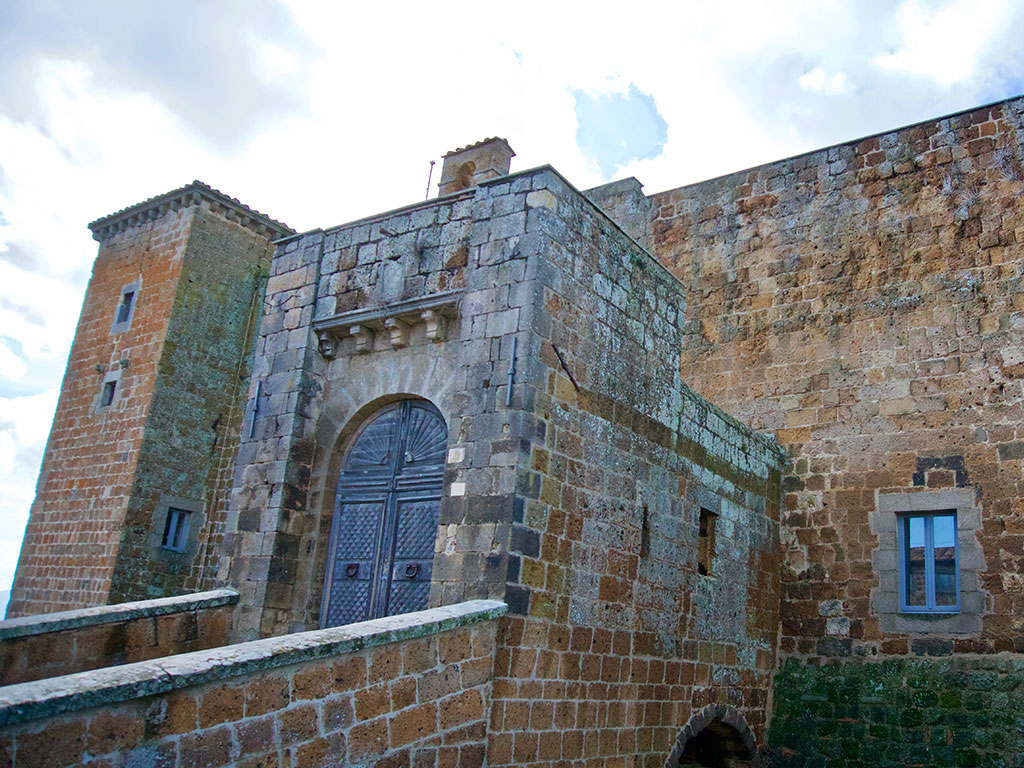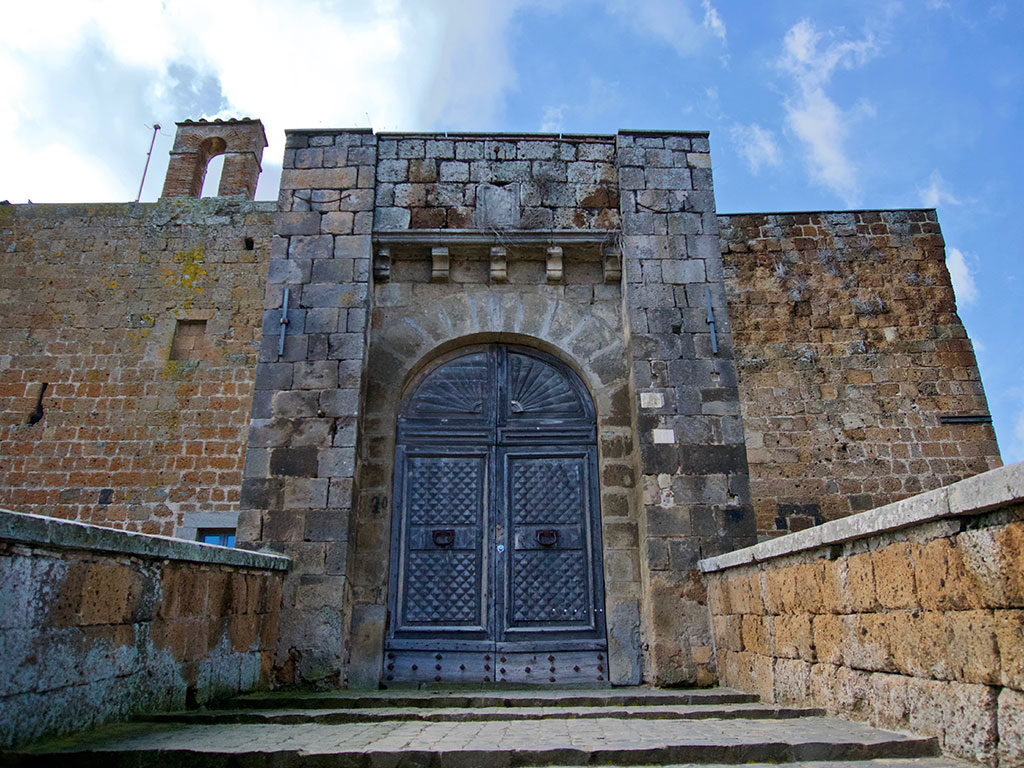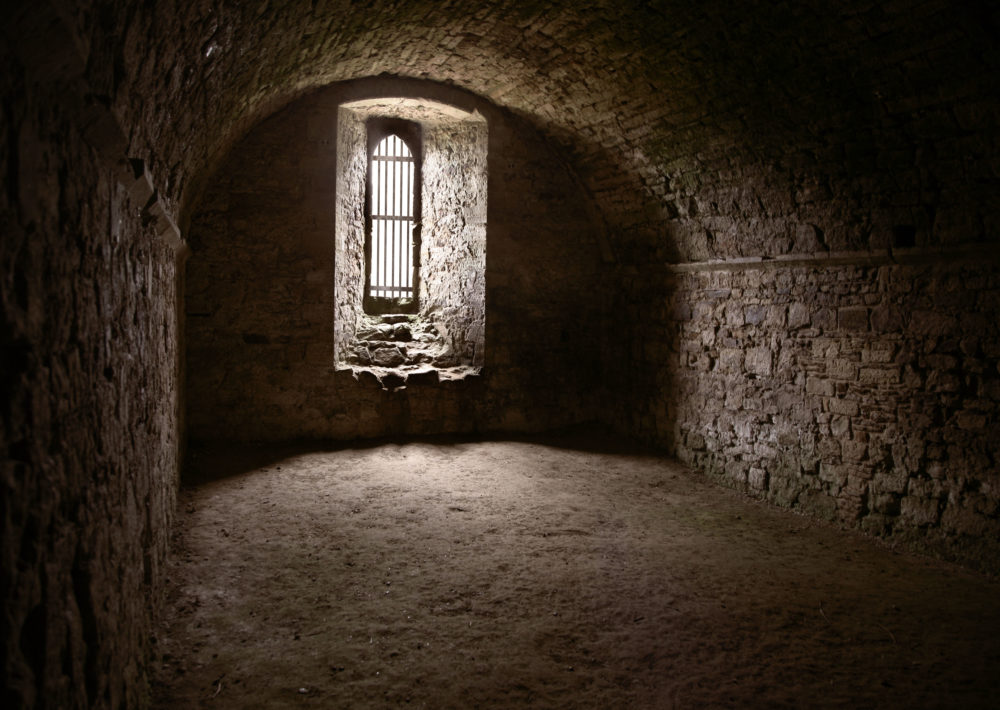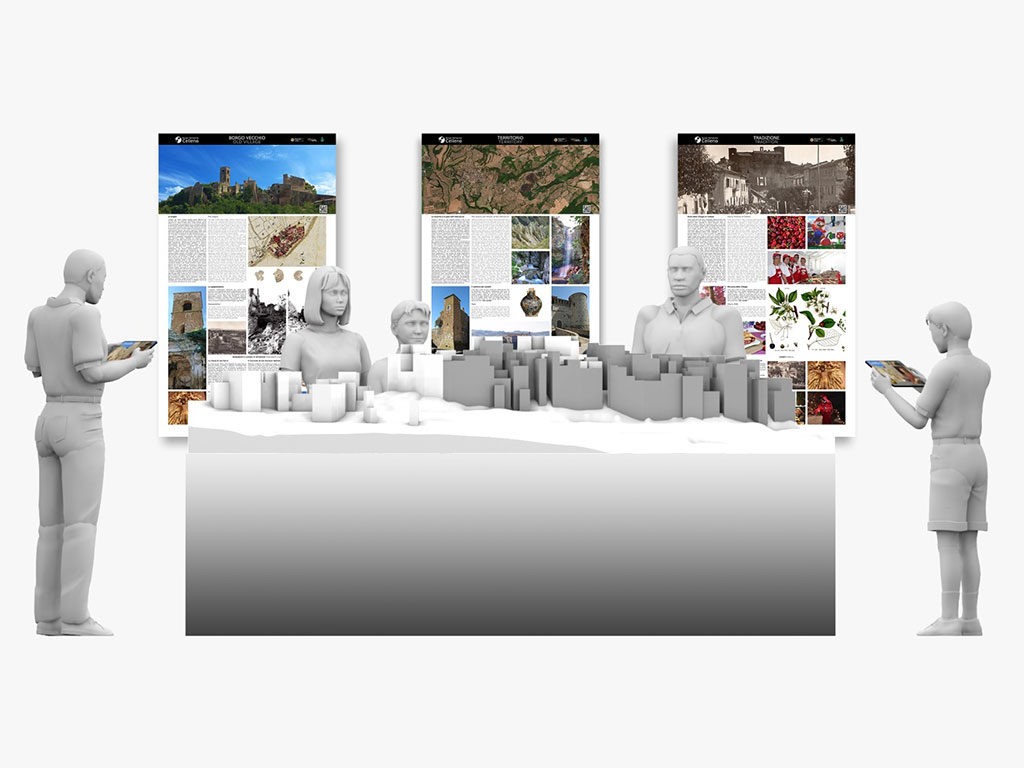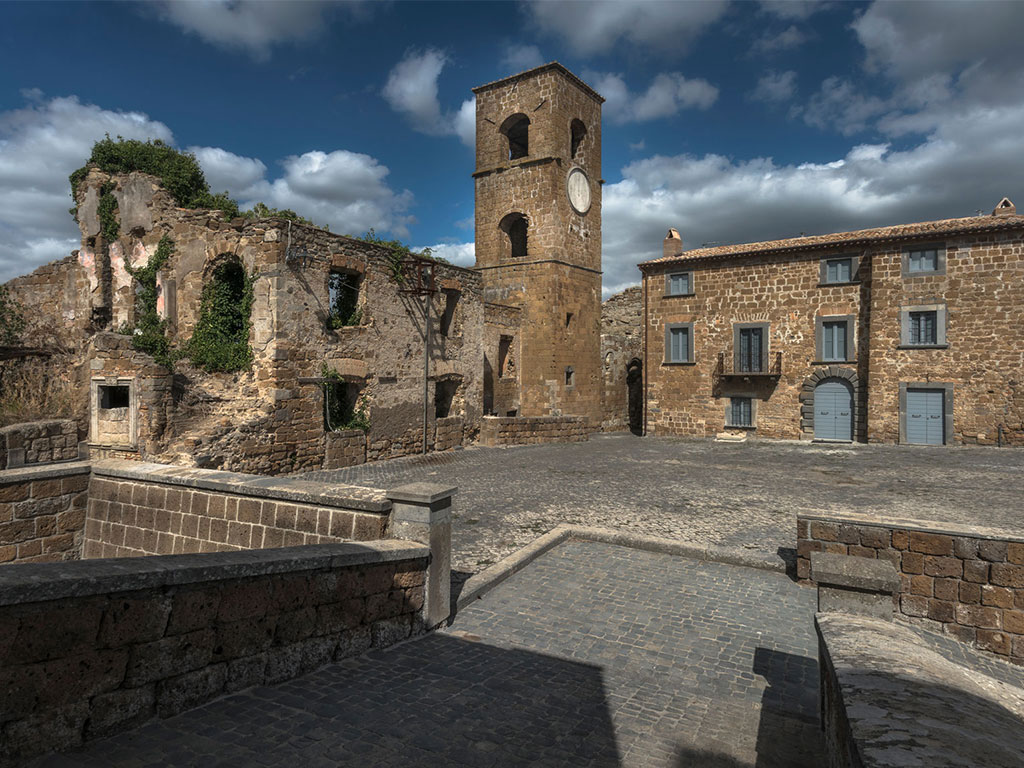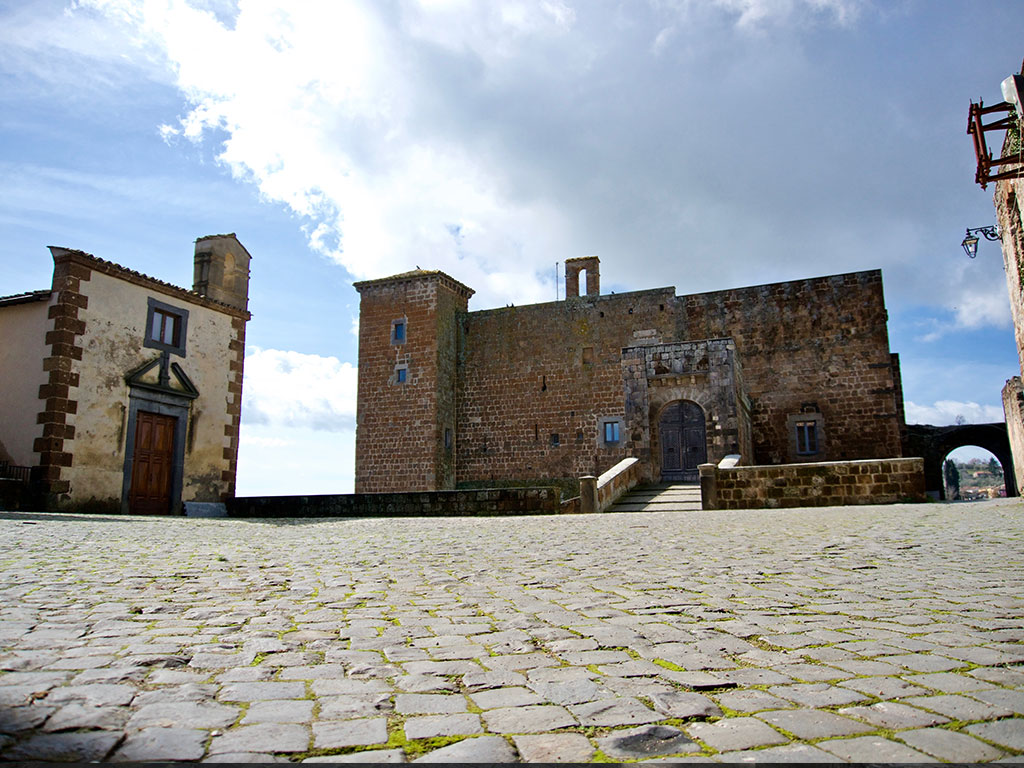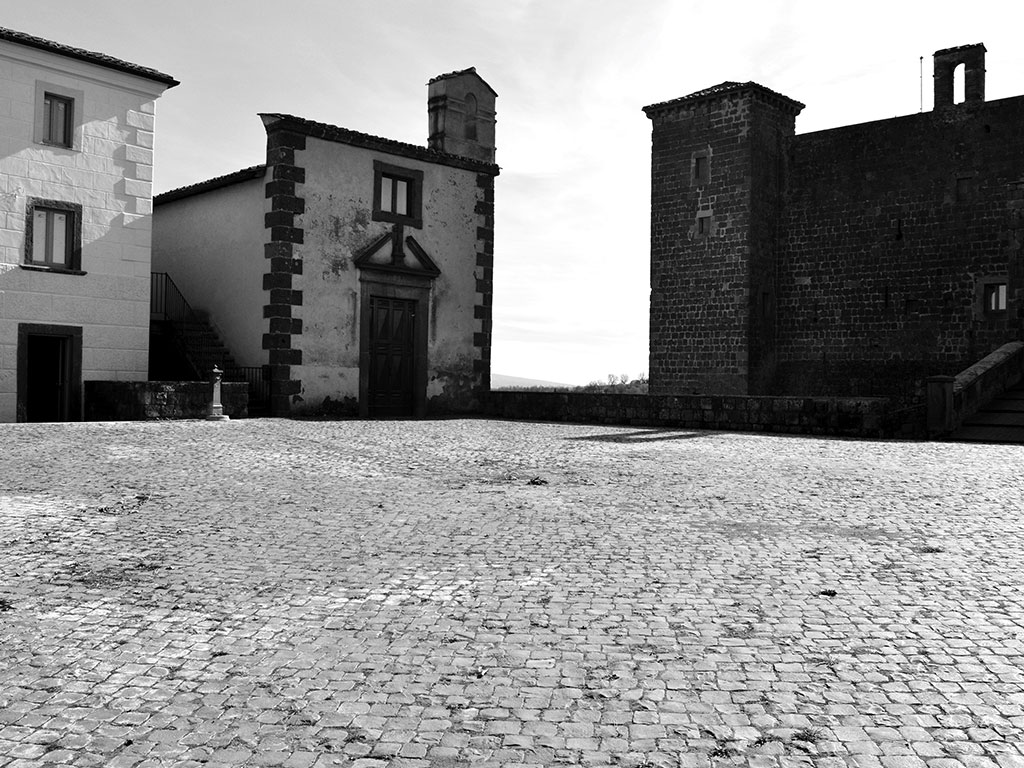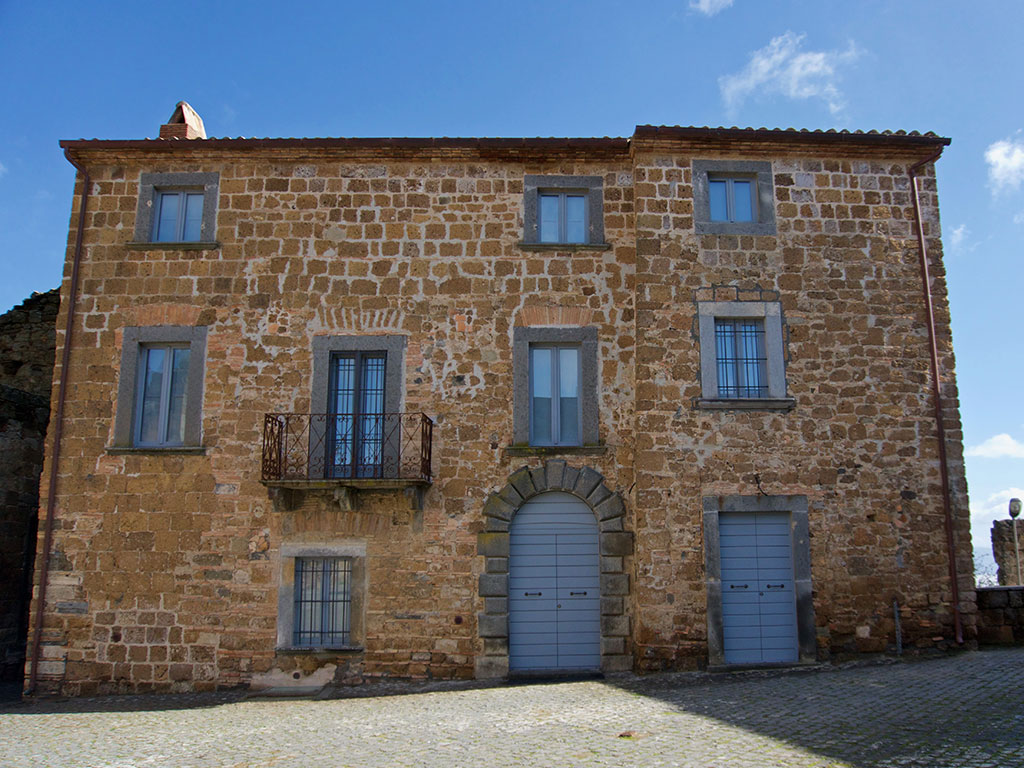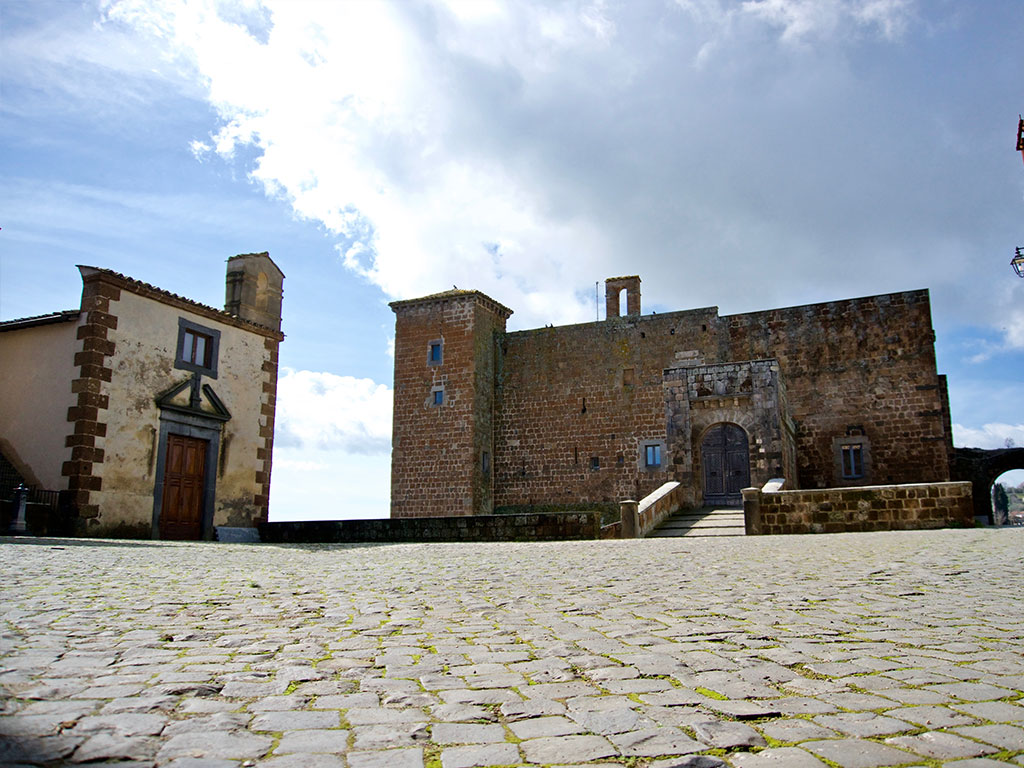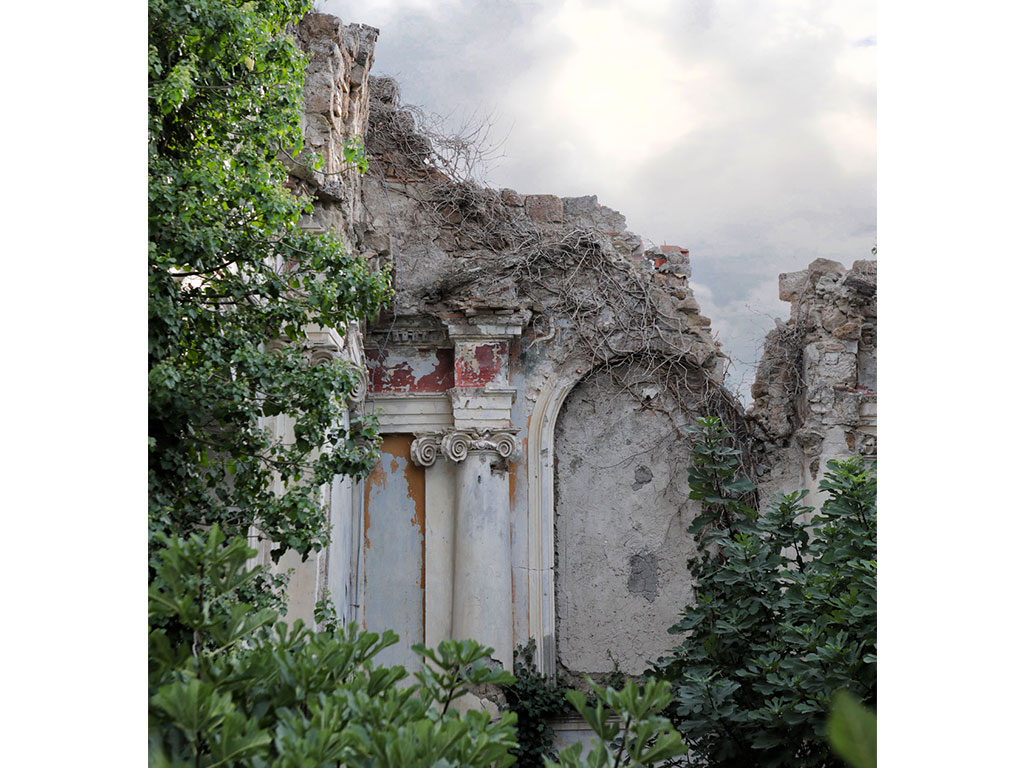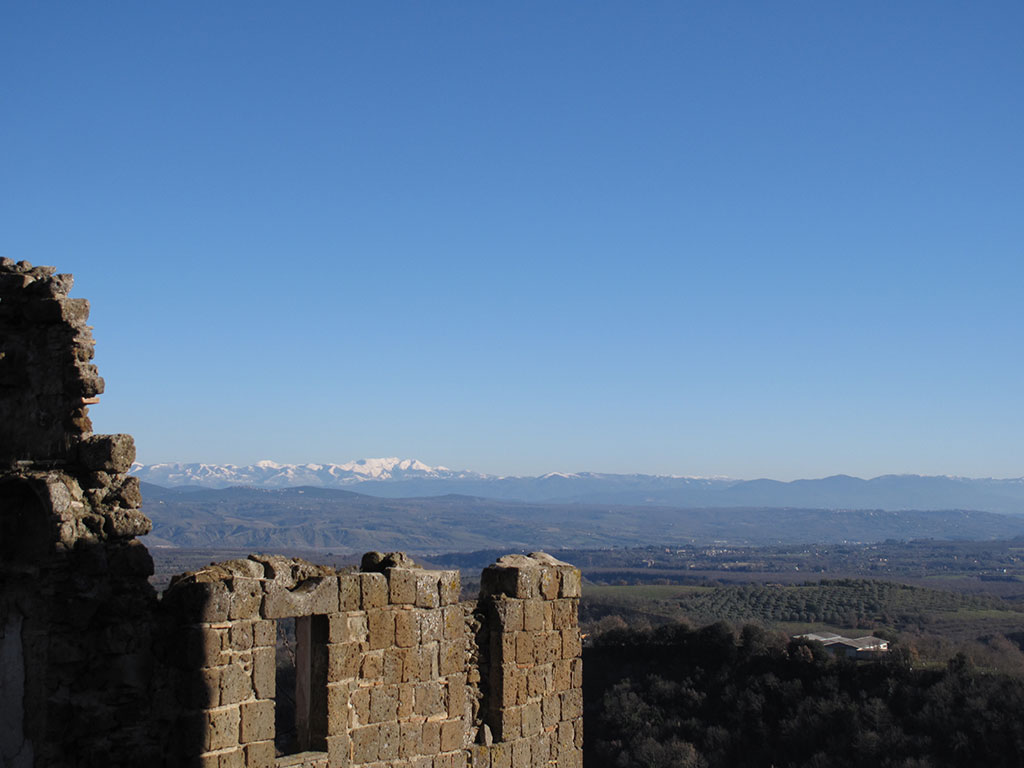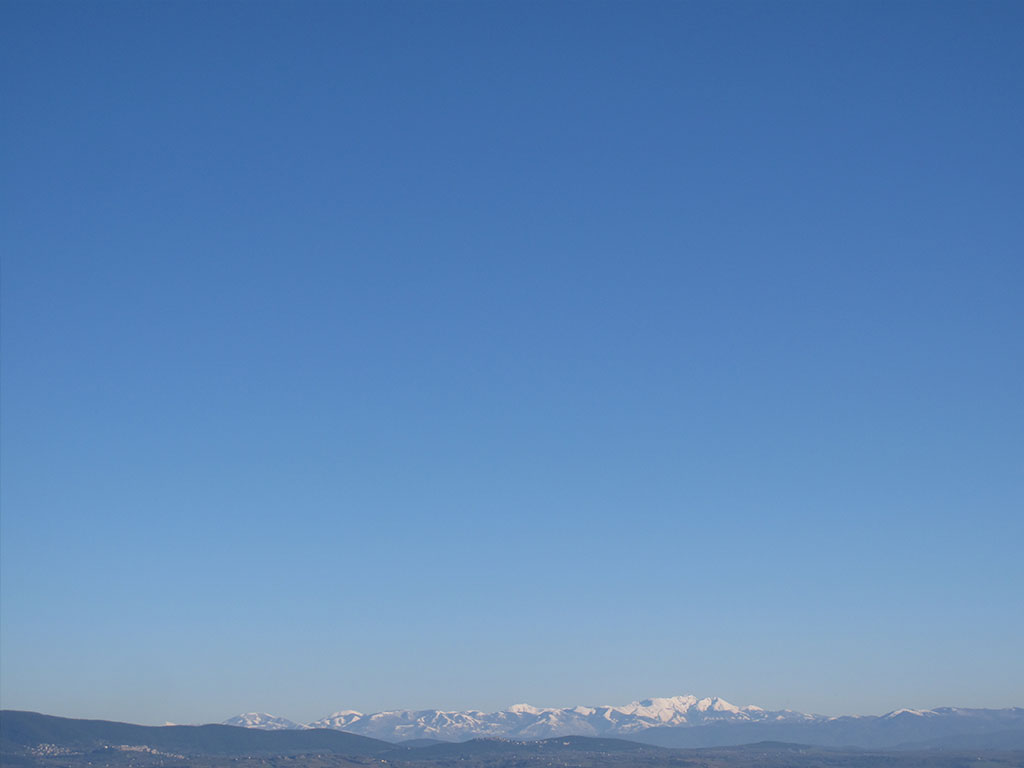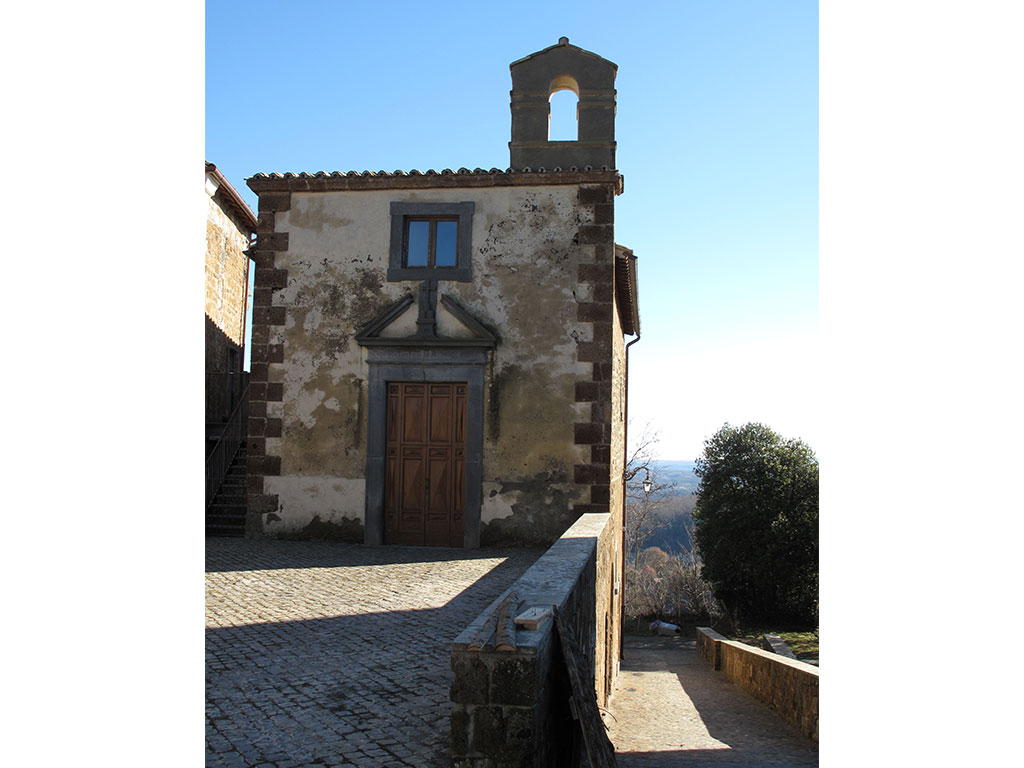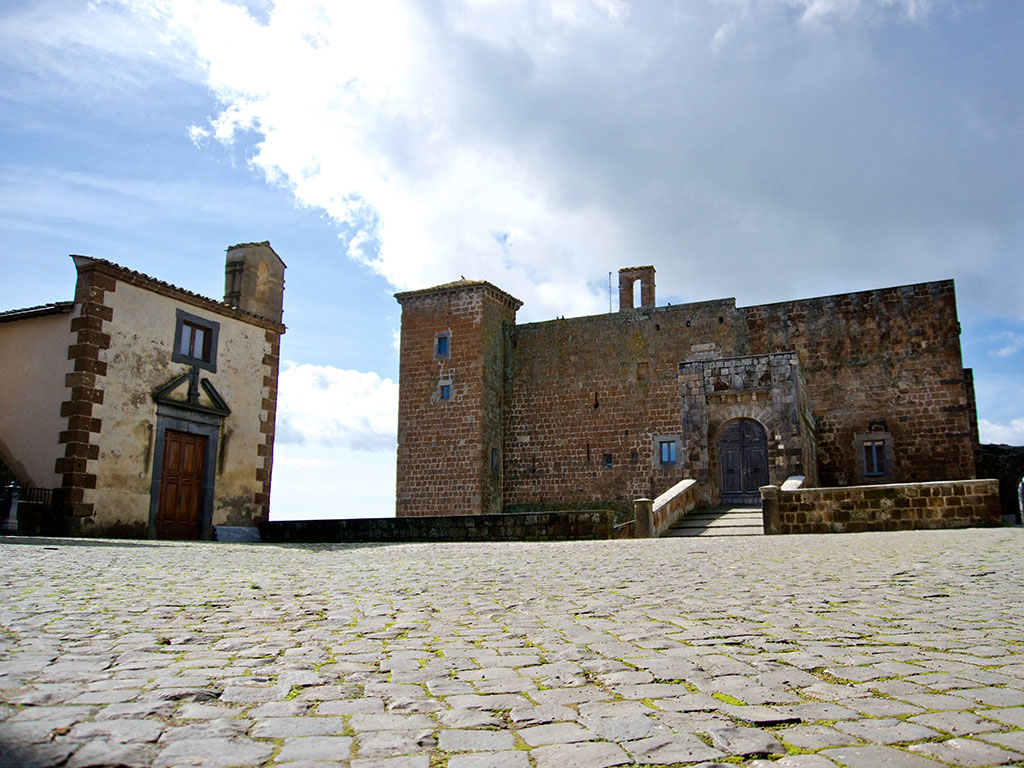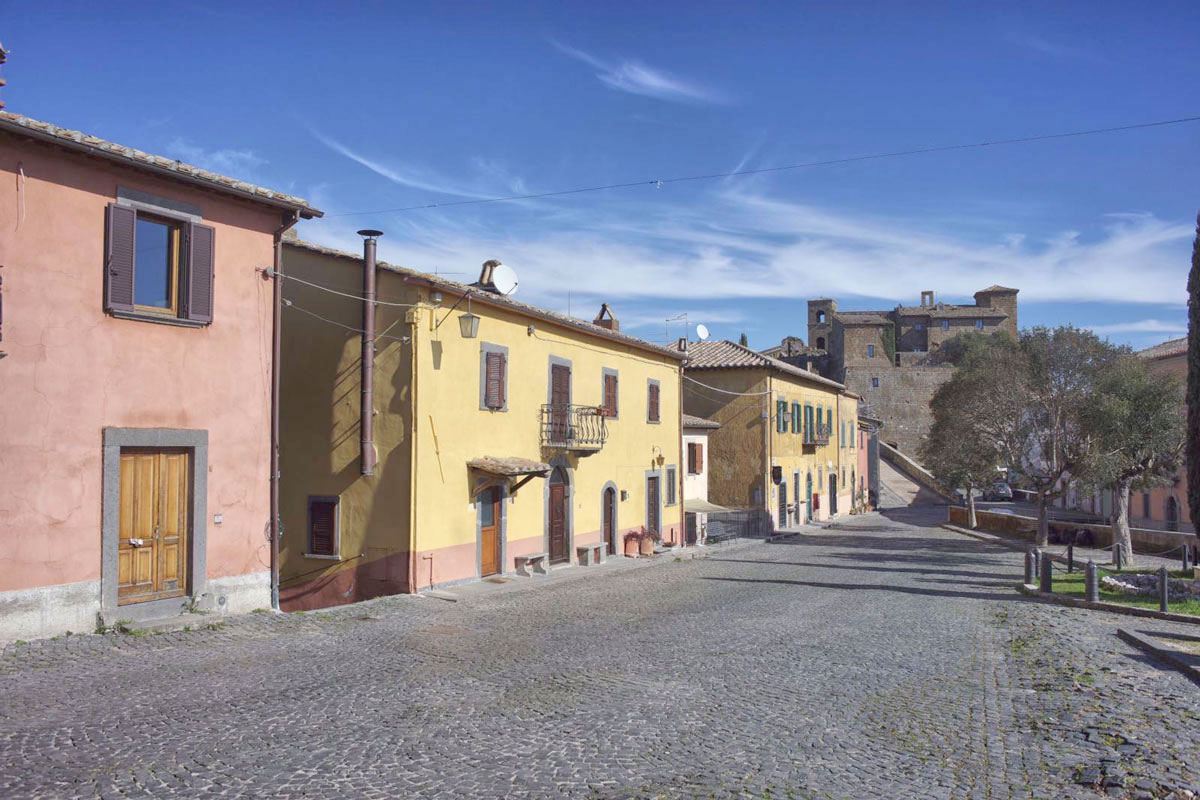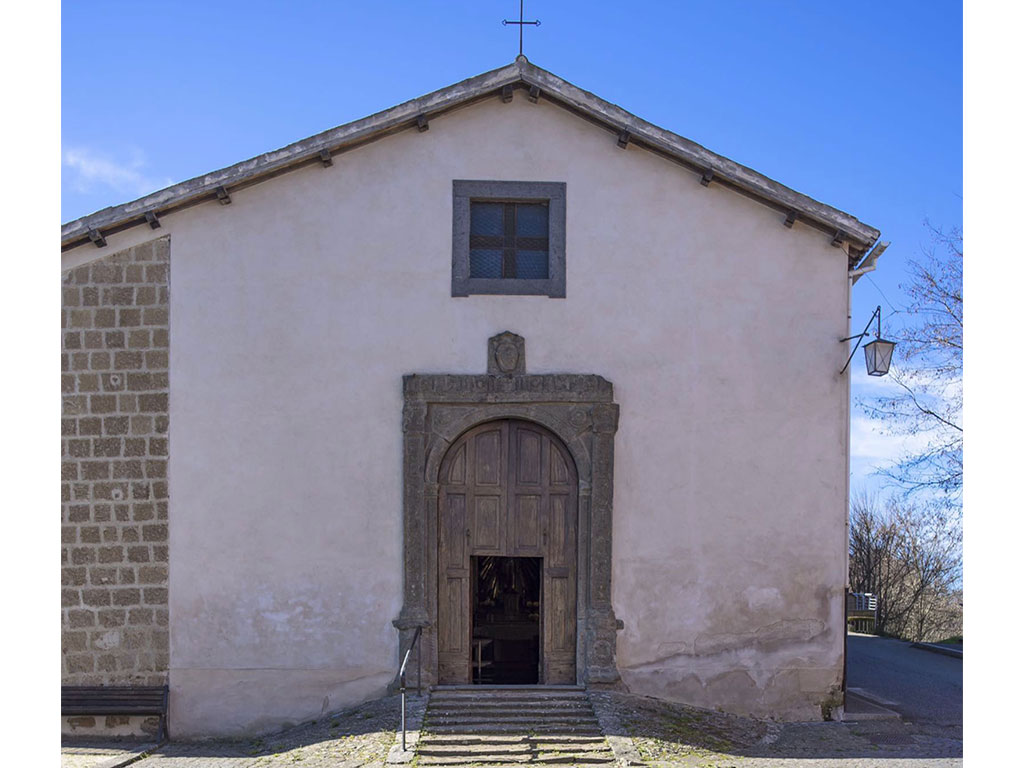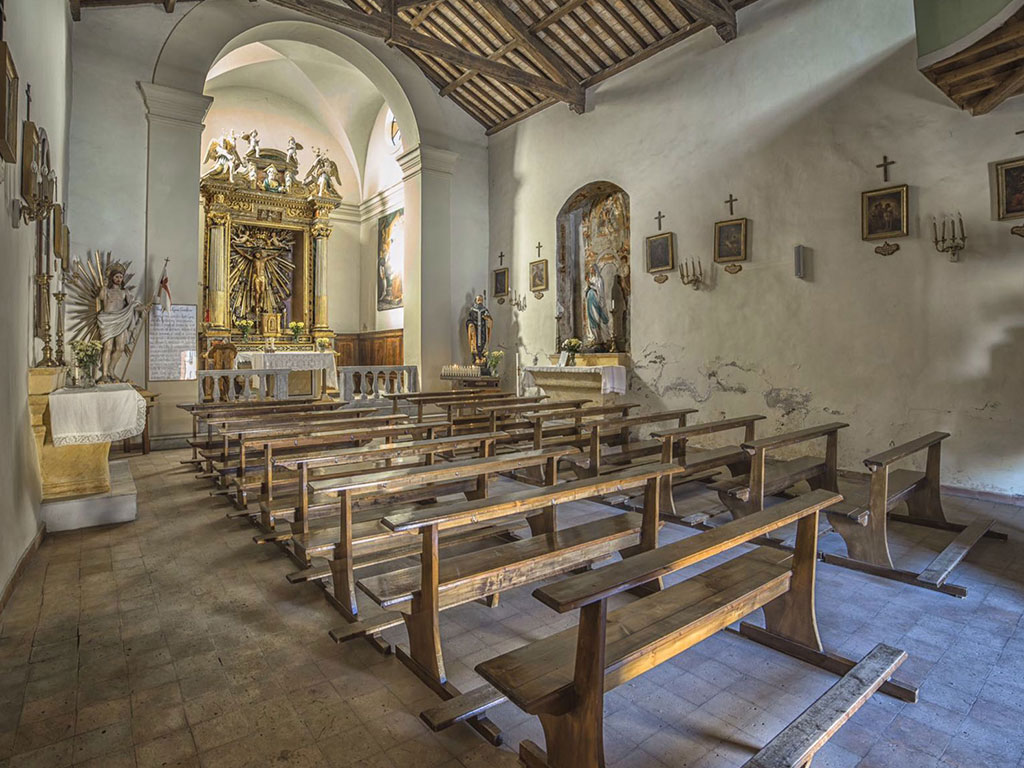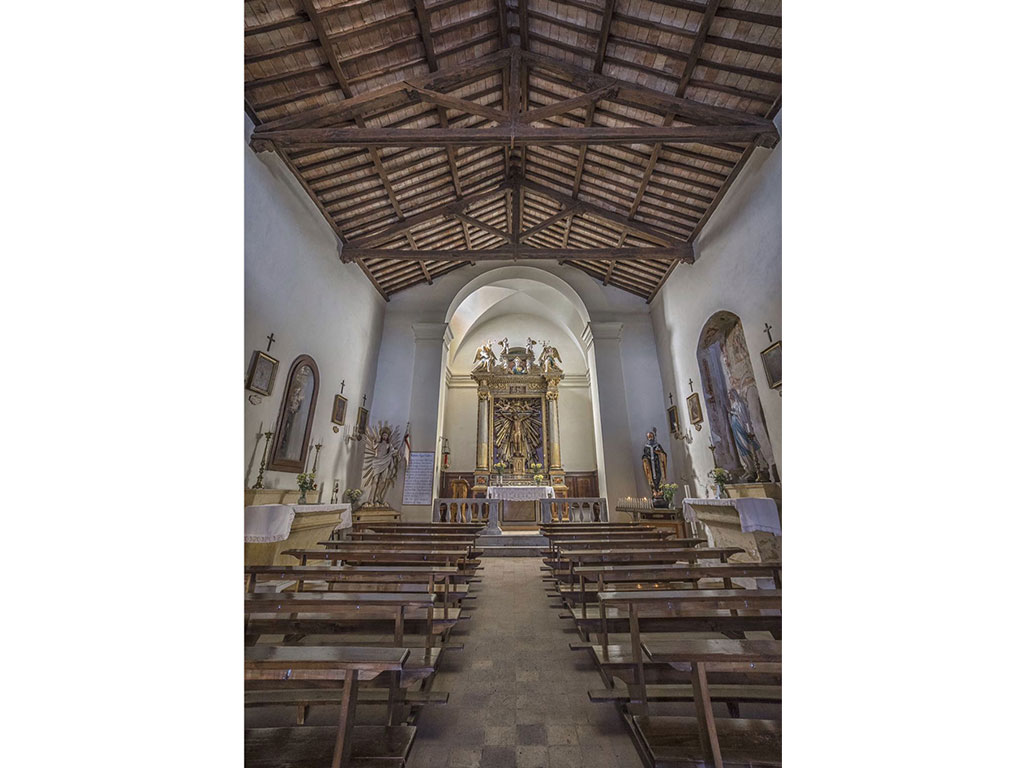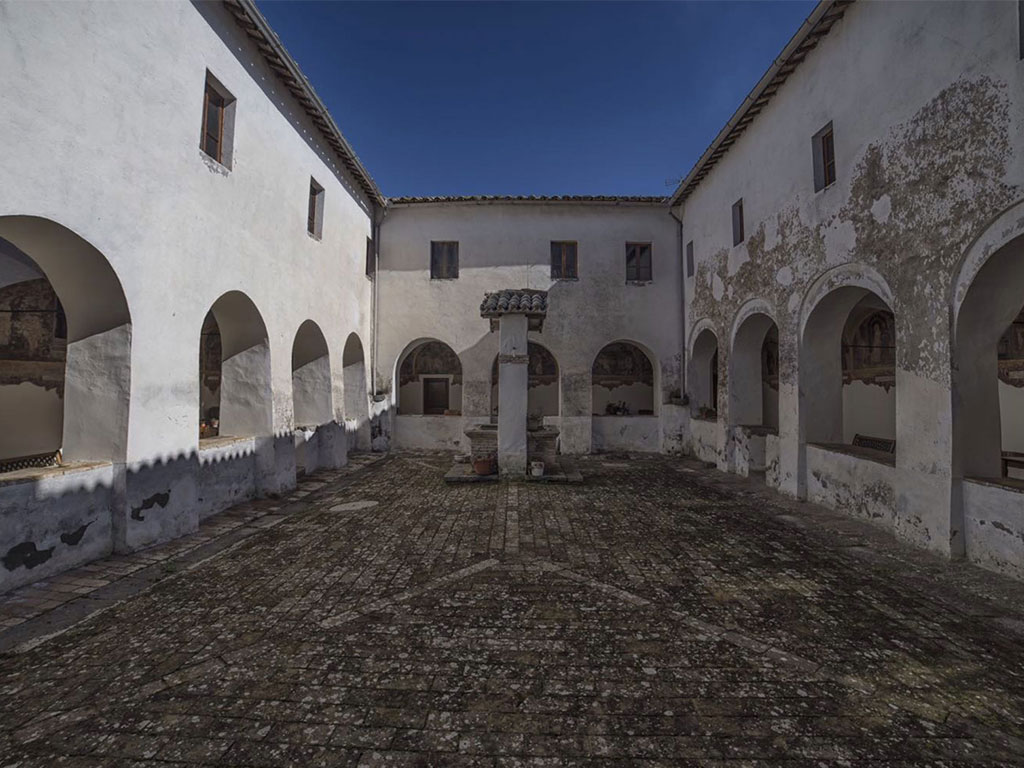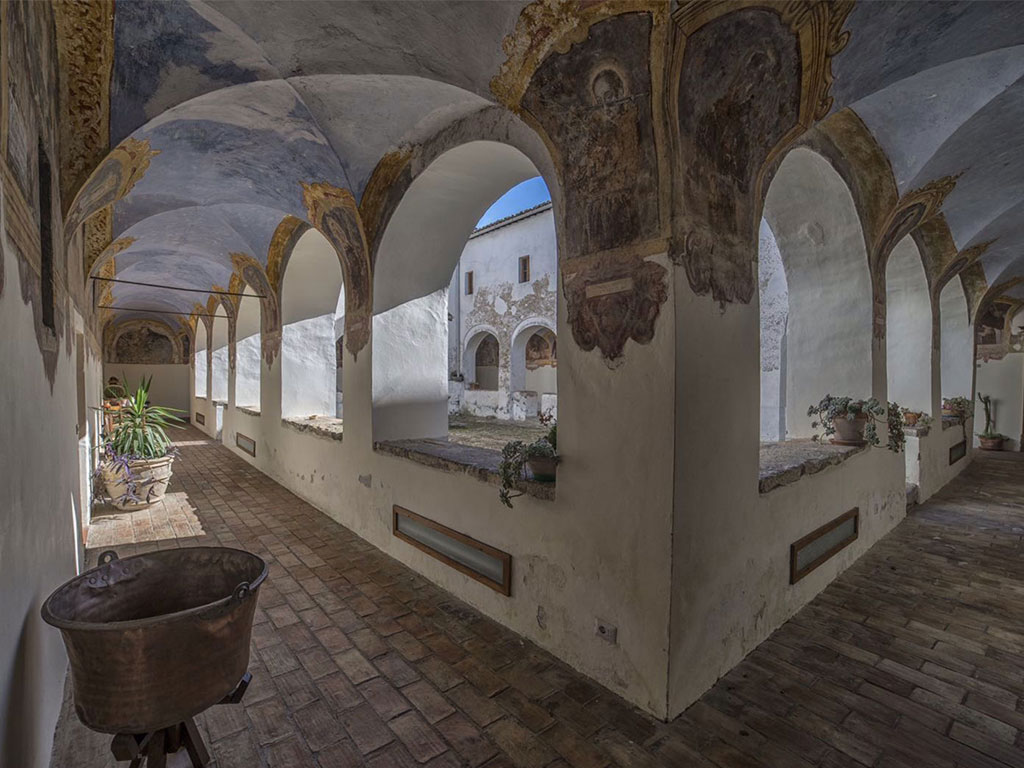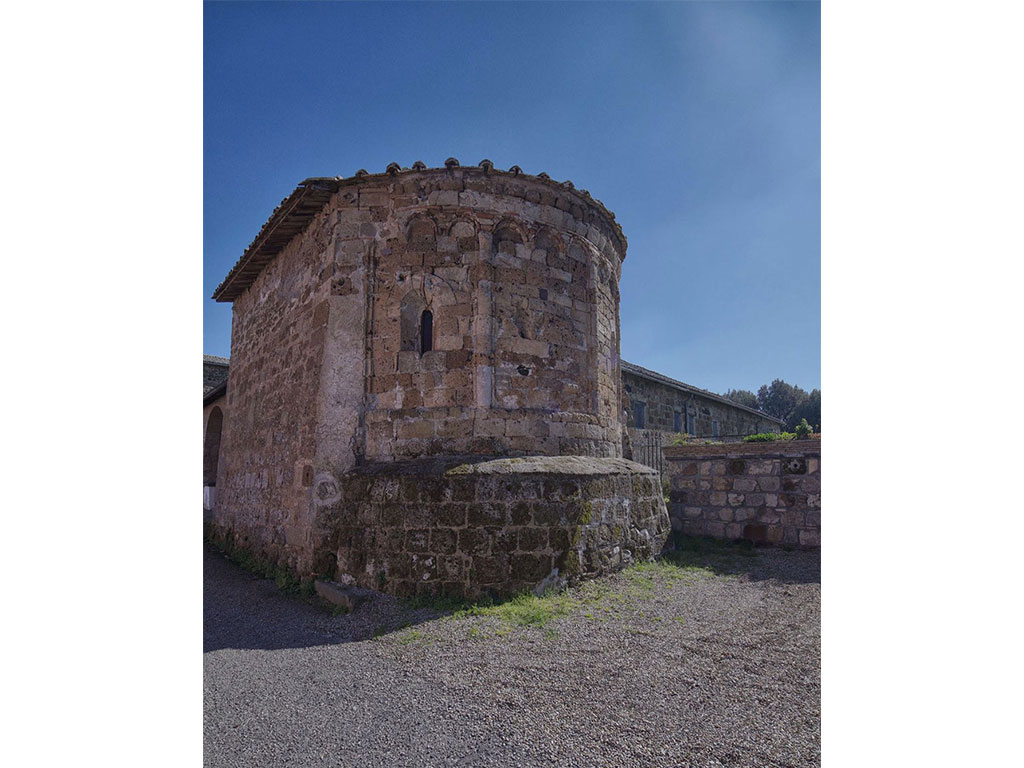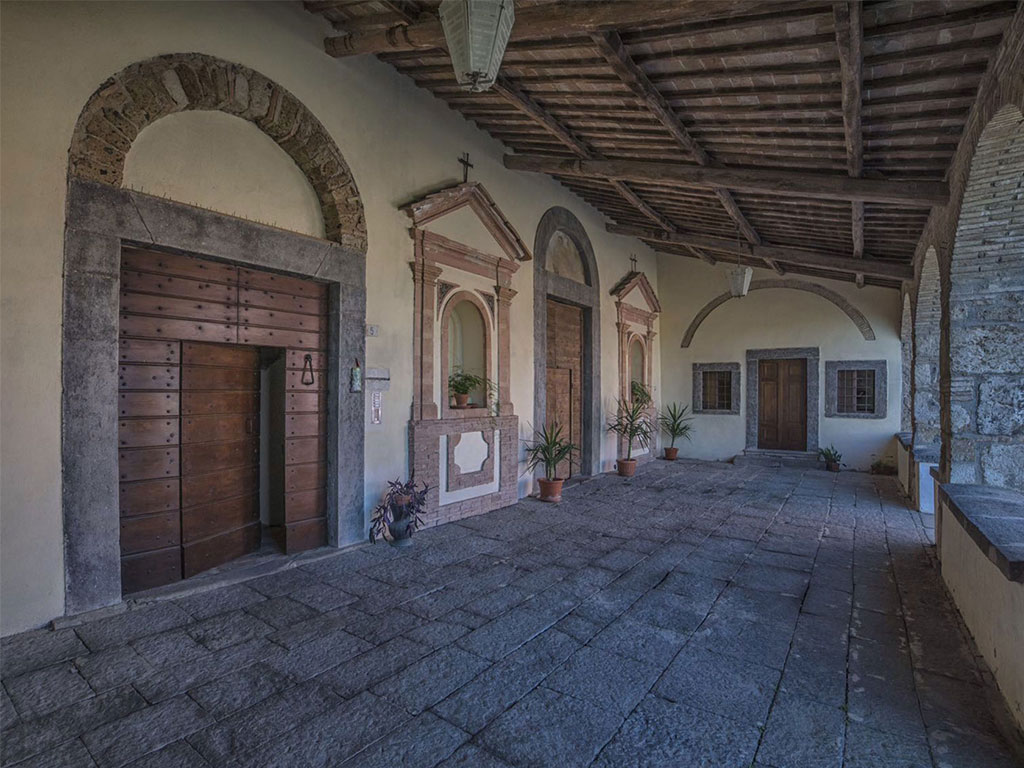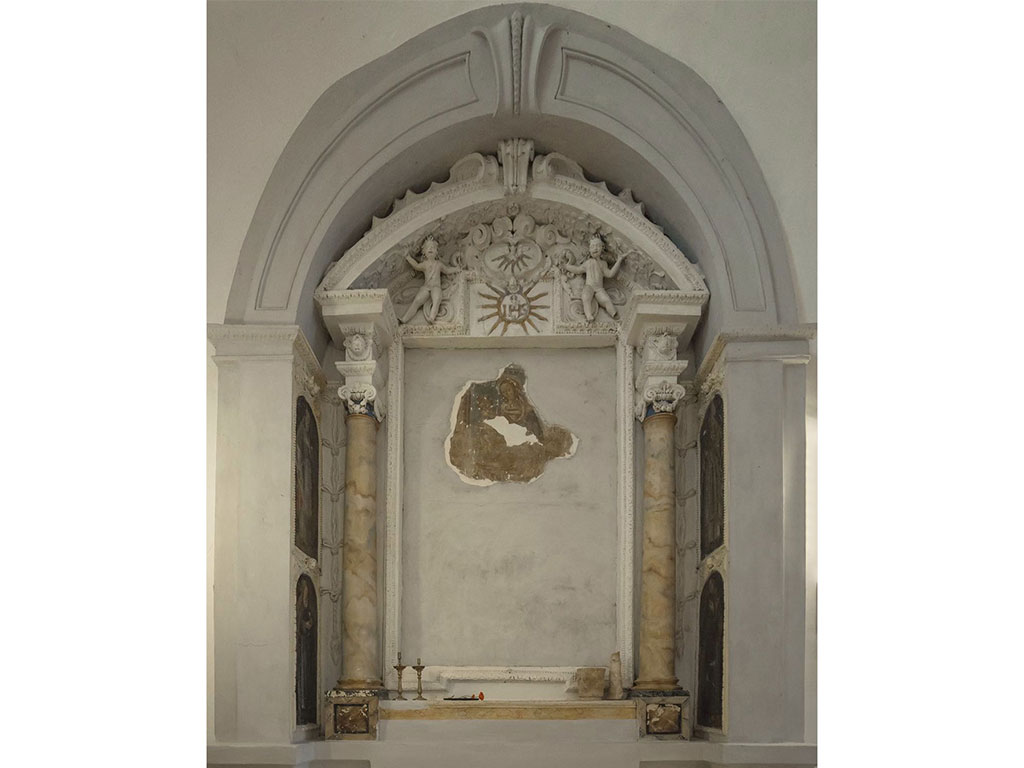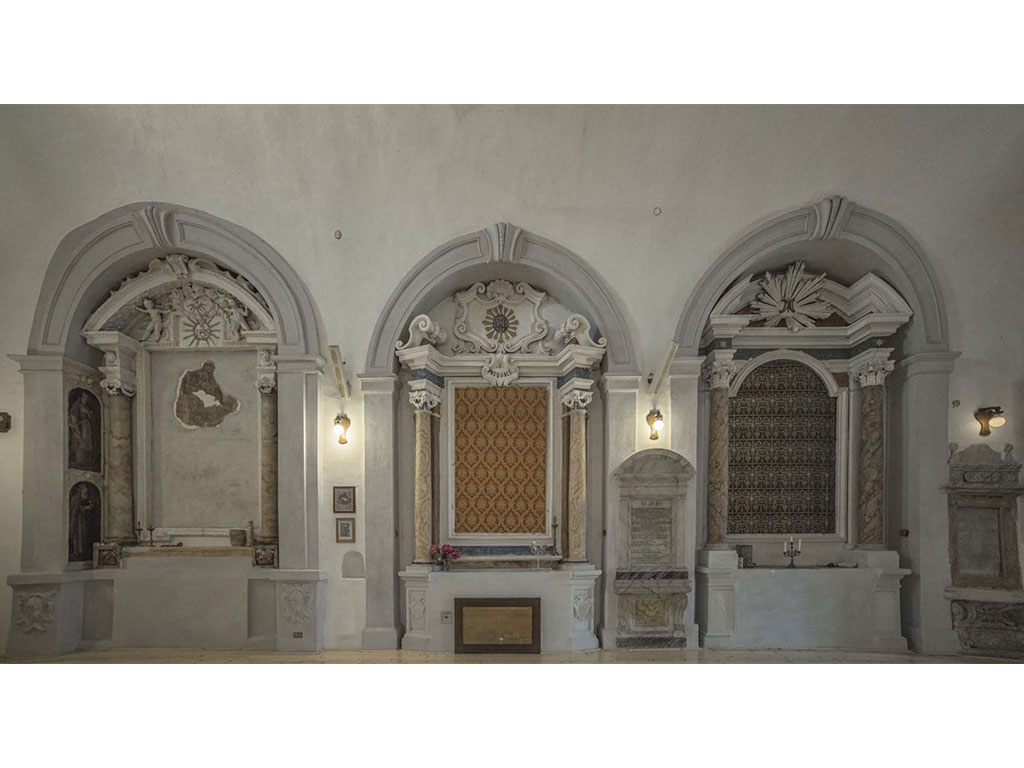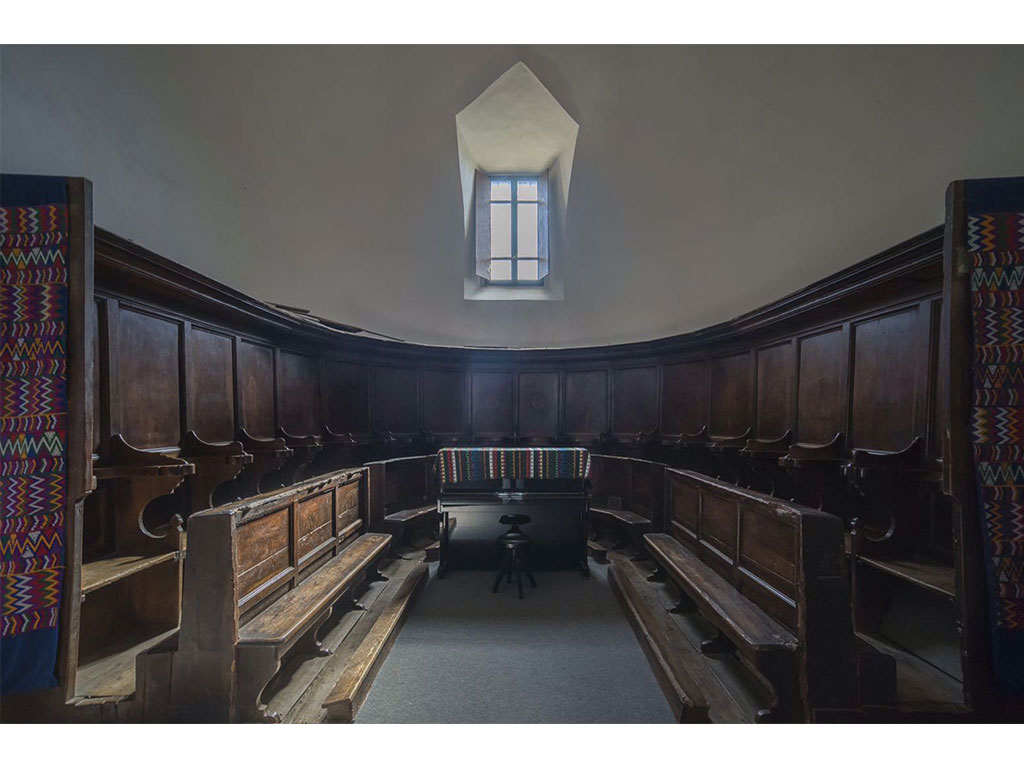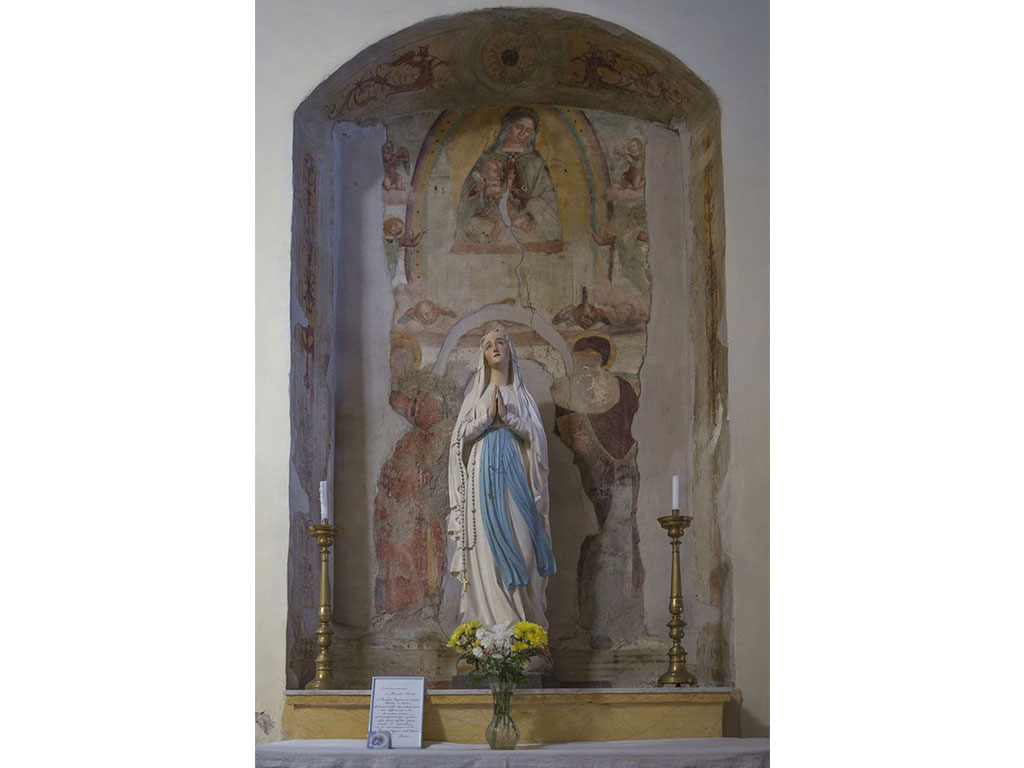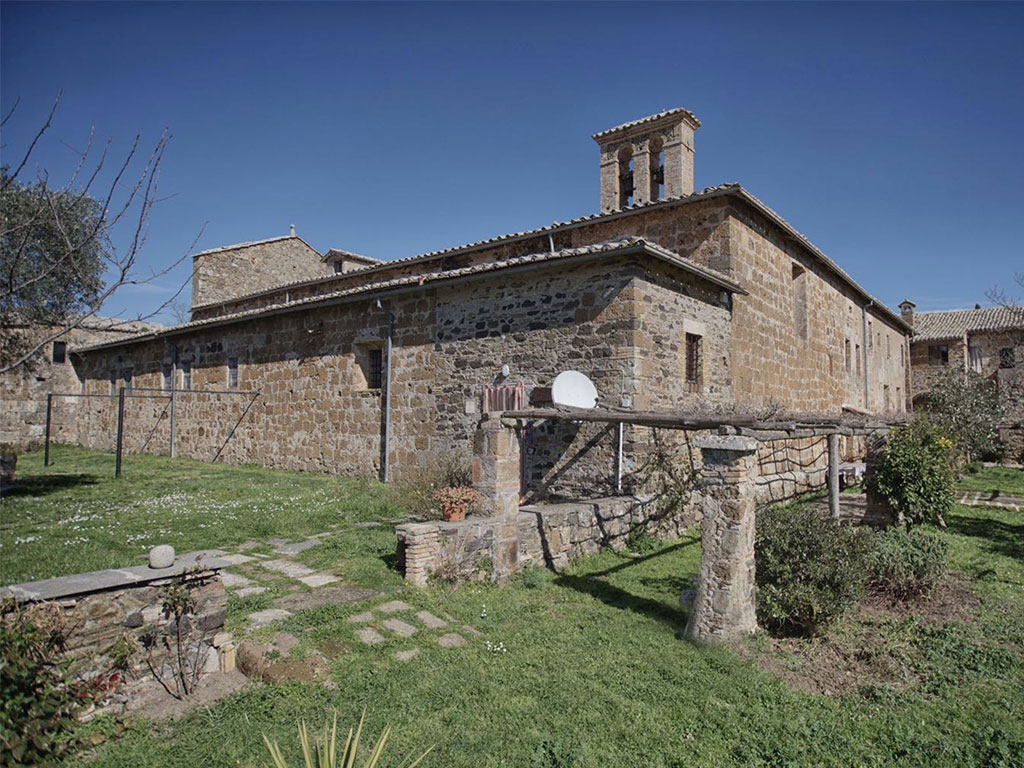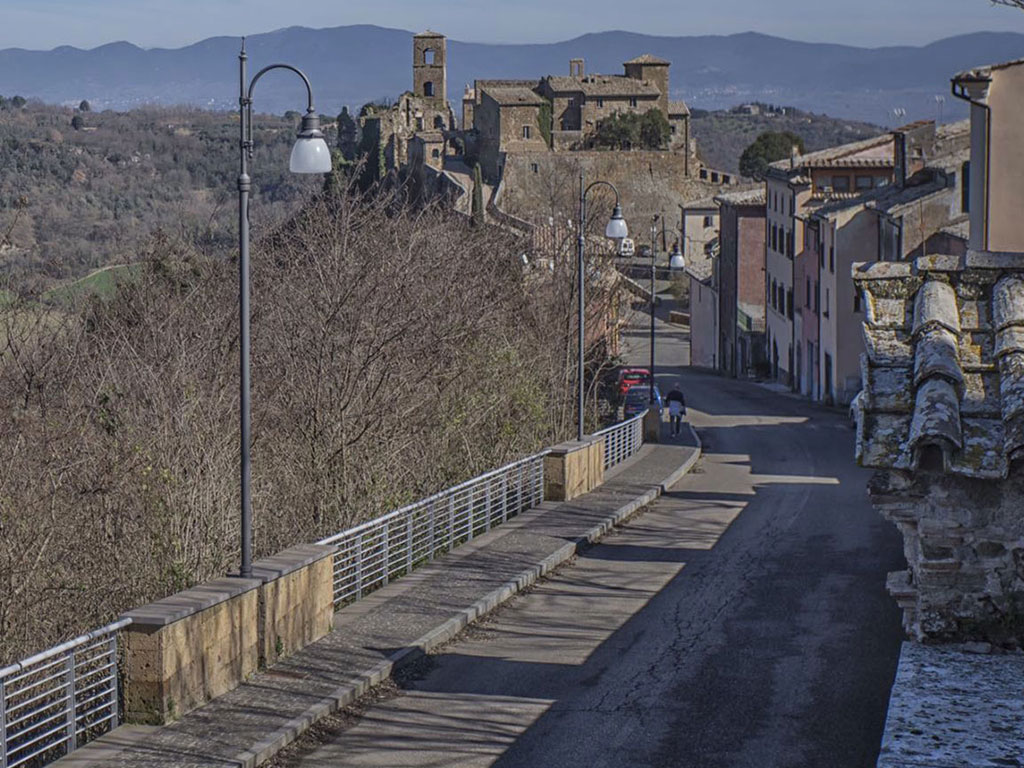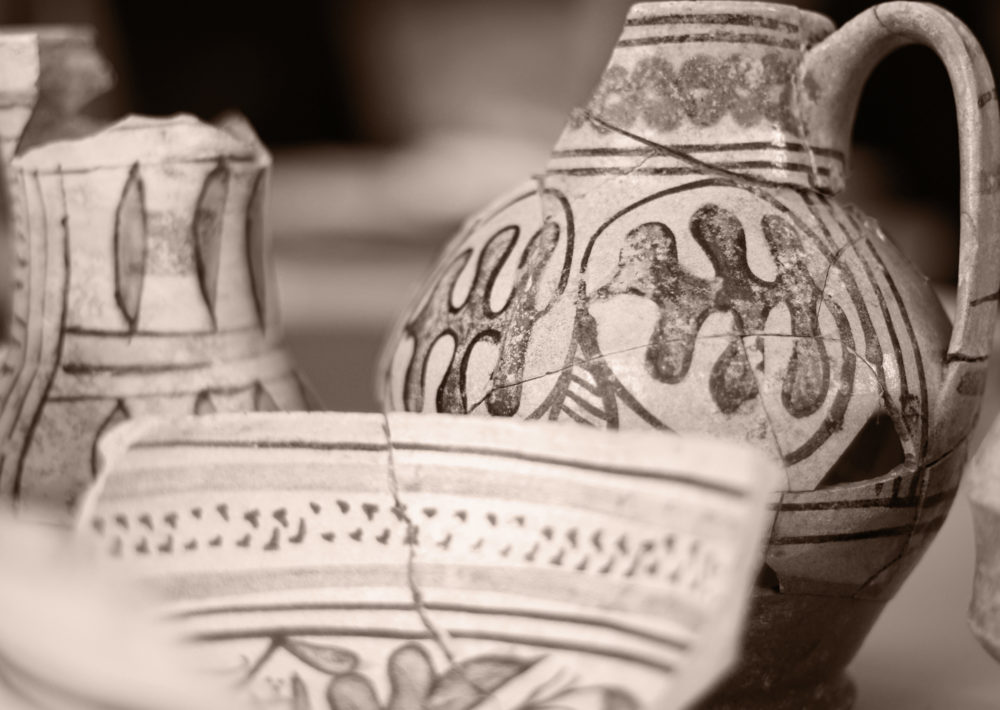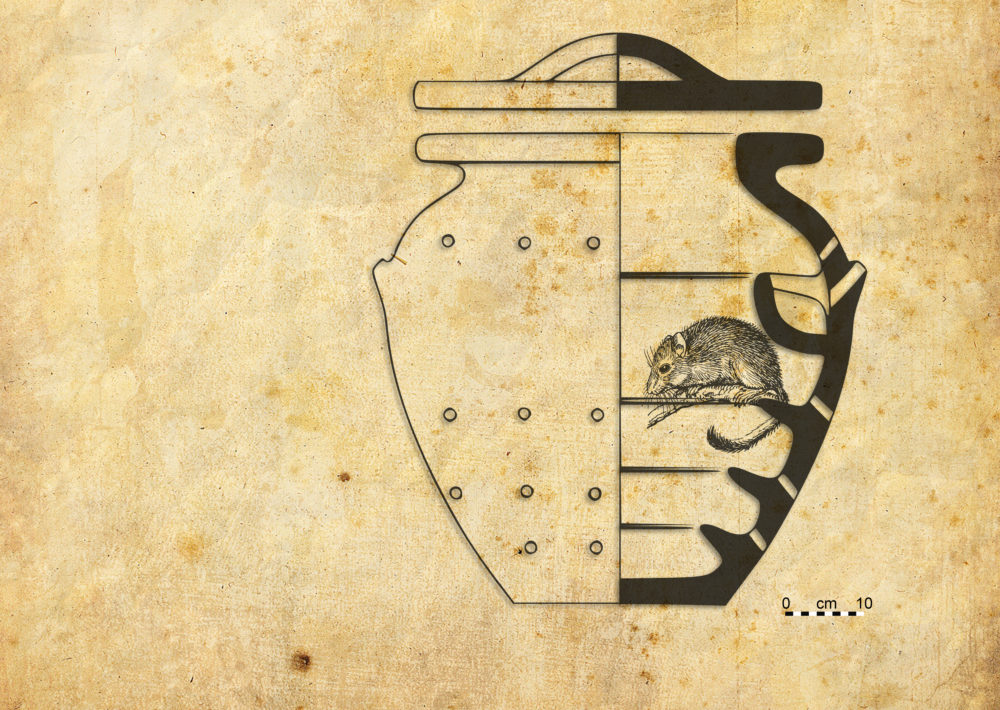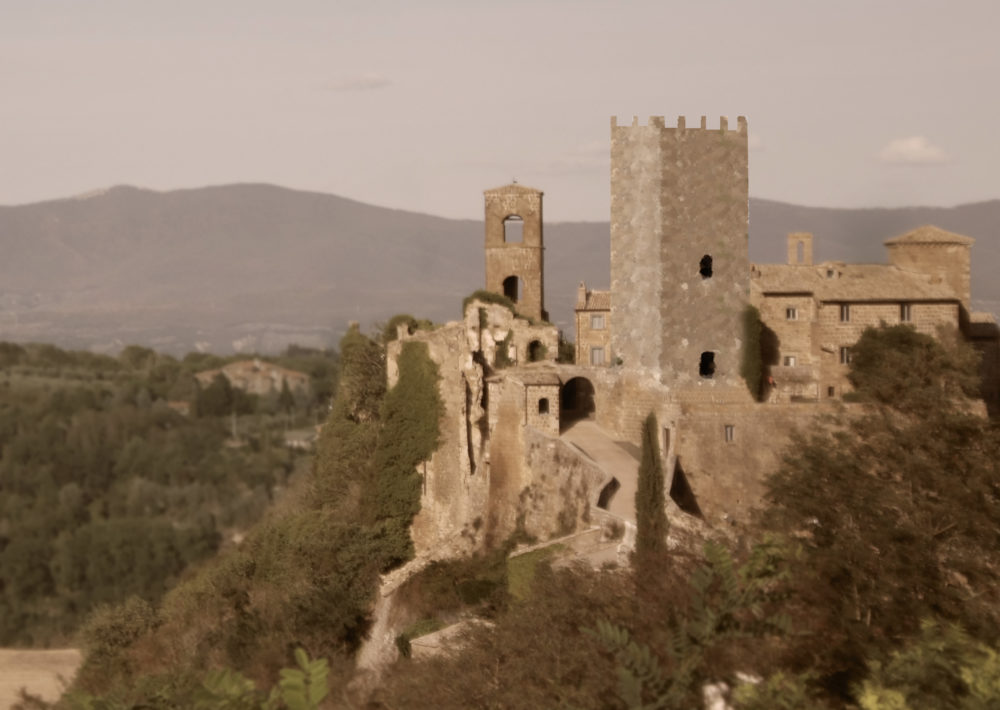Orsini Castle
The Orsini Castle was first the residence of the feudal lords of Celleno, then of pontifical officials, and finally it became the headquarter of the Municipal Authority, which used it to house the administration offices, then as an outpatient clinic, and then as a school, until the school buildings were built in town. In 1973, the artist Enrico Castellani bought and restored the castle. He lived there until his death on 1 December 2017.
THE OLD CELLENUM TALE
At the center, an interactive architectural model of Celleno Vecchio, including the part of the cliff on which it stands and built according to maps of the Gregorian cadastre of 1816 and a historical reconstruction of the village before the collapses occurred over time. Plastics are also a sensory experience for the visually impaired and the blind.
The route includes audiovisual contributions in augmented reality that tell the story of the Borgo through the buildings, people and events that have characterized its history.
Square “Piazza del Comune”
The square of the Castle of Celleno Vecchio is called Piazza del Comune. This square is overlooked by some buildings with significant historical-architectural value: the former church of San Carlo (16th century), the old parish church of San Donato (13th century), and the Orsini Castle. It was the main square, as well as the beating heart of Celleno Vecchio. The way into the square – and also the Castle – is by climbing the spectacular via del Ponte, which leads into the main square from Porta Vecchia, or through Piazza del Mercato, which is overlooked by the Orsini Castle, with an awesome defensive curtain.
Throughout its history Celleno’s main piazza, which was likely substantially modified in the 15th century, was the focus of daily life. It also witnessed some dramatic events, including the gruesome death of Giovanni Gatti on 27 May 1496.
Gatti, heir of a powerful noble family in Viterbo which had come off worse in a factional dispute, part of wider conflicts involving the Vatican, fled Viterbo and took refuge in the castle of Celleno. He refused an order by Pope Alexander VI (Rodrigo Borgia) to pay fealty to the Church. The Pope dispatched the abbot of Alviano, who had Gatti tortured and made him reveal the whereabouts of his family’s treasure in the tower keep. He then had him executed in the piazza along with his sons.
Church of Saint Donato
Some of the remains of the parish church of Celleno, which is dedicated to San Donato, date back to the medieval period — the portal is build in Romanesque-Gothic style (13th-14th centuries). The building went through many renovations, especially during the 16th and 18th centuries because of landslides and earthquakes, the last of which occurred in October 1941 and led to church being abandoned.
The Path of the Piazzarella
The path led from the ancient Via Maggiore to Piazza Piazzarella. The path’s walls on the left side collapsed, or were demolished, between the eighteenth and nineteenth centuries because of the instability of the land. On the edge of the cliff a column was erected and the base can still be seen. The difficult post-Word War II years, and the desire for better living conditions, accelerated the abandonment of the village. Plundering of the buildings with the removal of precious portals, stairways and doorways aded to the decay of the buildings.
Church of Saint Carlo
Located in the square of the historic center, it has a well-preserved basaltine stone portal. The church was built thanks to the generosity of the population of Celleno: the first stone was placed, with solemn ceremony, in the year 1615. It was joined by the Confraternity dedicated to Our Lady.
Square Piazza del Mercato
The square Piazza del Mercato, also called ‘il Torracchio’, is at the foot of the Castle. It has its origins in the late-medieval urban expansion of Celleno. This square was a commercial hub but also a space for urban and social connection between the two settlements: the castrum (the original fortified nucleus) and the burgus (the extramural “appendage”).
Church of Saint Roch
Unlike the other three churches in the old village, the Church of Saint Roch, which is located in the square of the same name right at the foot of the Castle of Celleno, is still used for worship. This 16th-century church named after Saint Roch, a saint with thaumaturgic powers, was built to protect the population from pestilence. It is characterized by a beautiful portal in peperino (brown or grey volcanic tuff) where you will see the coat of arms of the Orsini family, some relevant fragments of Renaissance frescoes, and a beautiful altar with a wooden crucifix. With a wealth of ornaments, figures and gildings, the altar is a unique example of Baroque art. Although according to tradition the ancient, moving, 1.7m-high, wooden crucifix would belong to the Donatello school, its age is still a controversial issue.
The Convent of Saint John the Baptist
The Franciscan convent of Saint John the Baptist, a short distance from Celleno Vecchio, was built in 1610 around the Romanesque parish church of Saint John, which still preserves the 12th-century apse.
The original nucleus is organized around a simple yet richly adorned quadrangular cloister featuring a cycle of frescoes regarding the Stories of Saint Francis. Around the cloister are the friars’ cells and in the centre is a monumental puteal cistern used for collecting rainwater.
The valuable frescoes in the Chapel (late 15th-early 16th century) and Sacristy, as well as the 18th-century wooden choir in the apse of the church, deserve a special mention.
The Convent was changed first in 1754 and then in 1769, with the extension of the residential wing, and the addition of a portico on the side of the road.
Within its walls is a wonderful park of ancient holm oaks. At the beginning of the 80s, after radical restoration works, the Convent became a tourist-cultural centre, with conference and convention rooms, a library, and rooms for hospitality purposes.
Landfill (Il Butto)
‘Pozzo da butto’ is a domestic refuse dump. Researchers from the University of Tuscia have studied and restored 10,000 ceramic fragments and shards recovered in 1975 during an excavation of the refuse dump of a nobleman’s house in Celleno.
Etruscan Warehouse
In 2017 am Etruscan warehouse or store was found which had been dug into the rock. It had been used in between the 3rd and 4th centuries BC, shortly before the Romans arrived. Excavations by the University of Tuscia recovered various artifacts, including wide-mouthed earthenware jars [pithoi] used to hold wine or water, grain or food, utensils used for cooking, and terracotta containers known as glirarium, used to keep edible dormice, considered a delicacy in the Etruscan period. The findings confirmed Celleno’s Etruscan origins.
The Bridge Road
It was the only access to the ancient fortified town. Protected on all sides, the caste occupied an important strategic position. The first mention of the castle comes in document dated 1026. Looking at the castle from the front, the building of the so-called Orsini castle is more expansive and had an imposing tower placed to defend the main entrance — it collapsed in a powerful earthquake in 1695. The castle center was abandoned between the 1930s and 1950s.
The Valley
Locally known simply as La Valle. The elderly here recall how at the start of spring the white cherry blossoms would stand out against the intense green of the meadows. Then as the summer advanced the meadows would start yellowing and the harvesting would begin. They remember being able to spot in the Vally the small figures of farmers working the fields — and they could hear the shouts of children playing, singing and the sounds of nature.
Le Ripe
A small district of the castle around the church of San Donato. Thick walls completely surrounded the built-up district and hill until the 1930s. But earthquakes and landslides have taken their toll of them with a steady abandonment of the area from the 1930s onwards. The President of the Italian Republic decreed in 1951 requiring a formal abandonment. The sides of the hill had been unstable since remote times. Like nearby Civita di Bagnoregio, Celleno sits on a light, porous rock known as tuff and underneath there’s a layer of unstable clay.
